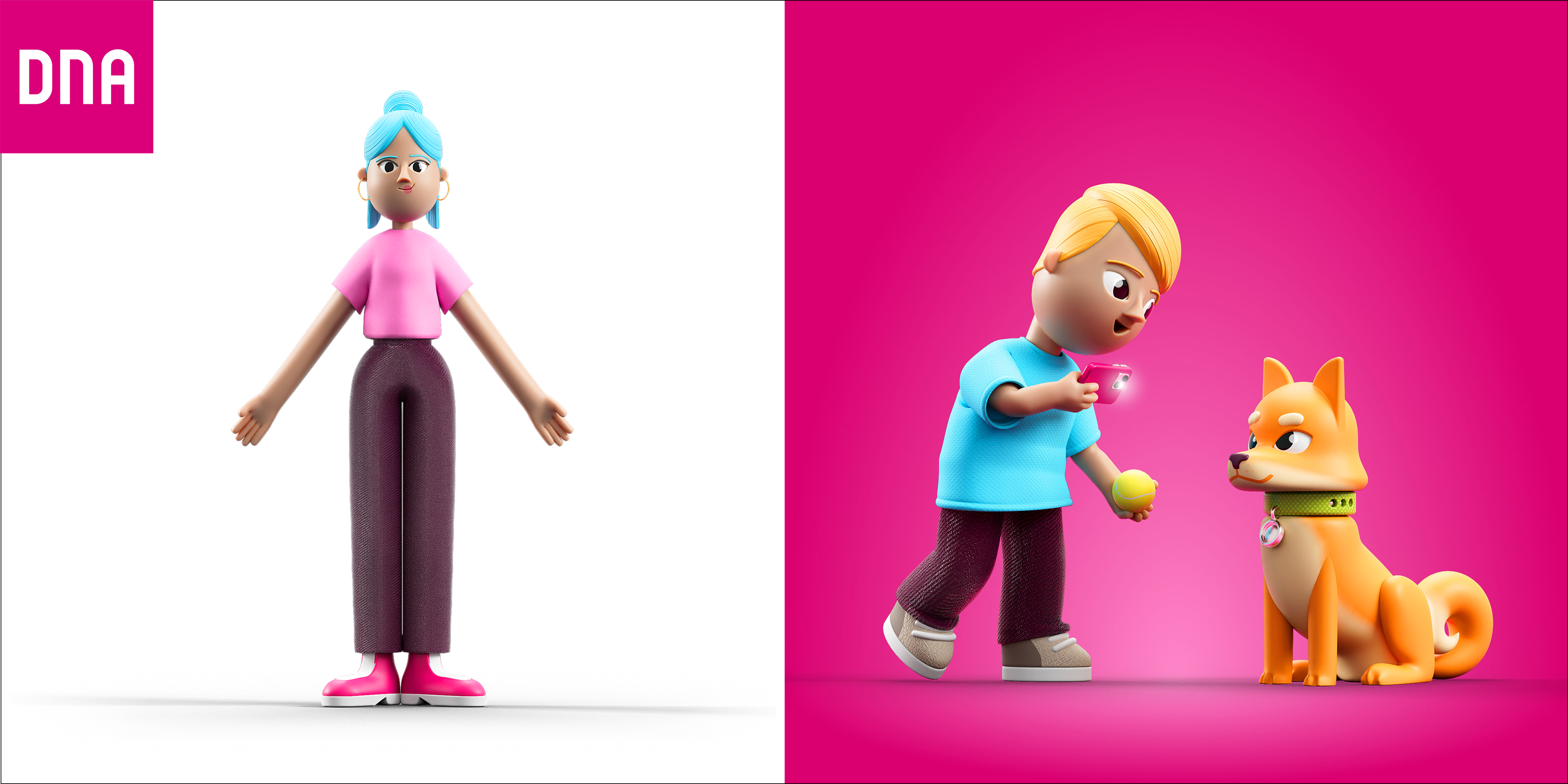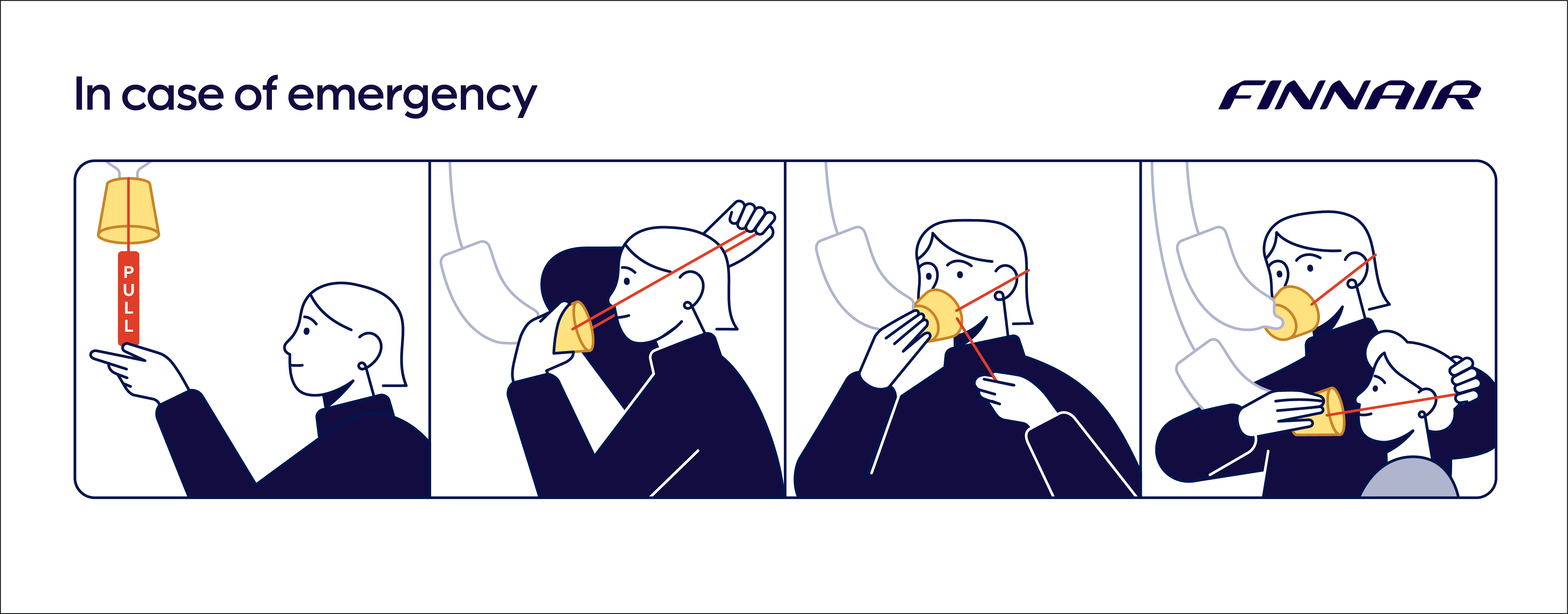The hidden strategy behind great brand illustrations
20.2.2025
The right illustration style can make your brand visually stand out in a sea of sameness. However, such style is not born out of a brief moment of genius, but instead grows from a strong concept. Here are some key insights to help you start strong.
At SEK, we delve into the exciting world of crafting illustration style concepts for brands. We're often engaged in fascinating conversations with clients and within our team about how illustrations can shape and define a brand's identity. Designing an illustration style is, at its core, an inspiring and creativity-driven project. Yet, we've learned that developing and integrating a unique illustration style can pose a challenge for many companies.
A great illustration appears effortless – but that is an illusion
In reality, crafting a company's illustration style is often a complex, multi-layered process, similar to conceptualizing a photography style. What appears simple is actually the result of masterful design and thoughtful composition. The sheer number of factors to consider in an illustration project can come as a surprise.
At SEK, we delve into the exciting world of crafting illustration style concepts for brands. We're often engaged in fascinating conversations with clients and within our team about how illustrations can shape and define a brand's identity. Designing an illustration style is, at its core, an inspiring and creativity-driven project. Yet, we've learned that developing and integrating a unique illustration style can pose a challenge for many companies.
A great illustration appears effortless – but that is an illusion
In reality, crafting a company's illustration style is often a complex, multi-layered process, similar to conceptualizing a photography style. What appears simple is actually the result of masterful design and thoughtful composition. The sheer number of factors to consider in an illustration project can come as a surprise.

Illustrations can generally be divided into three categories: pictograms, spot illustrations, and large-scale brand or editorial illustrations. And no matter the type, they need to deliver on multiple fronts: they must meet the brand’s needs, convey right messages and top of that, more than any other aspect of a brand’s identity, they’re expected to bring joy.
Why brand illustrations are tricky
Here are a few factors that present challenges to the process:
Everyone has an opinion. Illustrations are something everyone is eager to comment on and often feels passionately about. Why? Because since our childhood, we've been exposed to different kinds of illustrations through storybooks and comics. While photography is a relatively modern medium, illustrations have been around since the days of cave paintings. They almost instinctively stir emotions within us, for better or worse. Much like our tastes in music, food, or cars, we know what we like when it comes to illustrations.
Efficiency is key. Illustrations are expected to be professional and eye-catching, yet also easy to replicate by non-professionals. This expectation has driven a global trend towards more simplified styles, like the minimalist flat designs. Widely adopted styles can make it difficult for brands to stand out when overused.
The artistic dream vs. the reality. Illustrations often evoke dreams of bold artistic expression, offering a chance to inject emotional depth into a brand's otherwise functional identity. However, the need for clear communication usually trims away the most experimental styles. Yet, an illustration style should embody a distinct point of view, focusing on ideas that add something intriguing.
AI to the rescue? Unfortunately, not yet. We dream of AI swooping in to solve some of the challenges in illustration work by speeding up the process and making it easier. But as of now, maintaining consistency in style and converting AI-generated art into scalable vector formats remain obstacles. AI tools might become more helpful in the future, but for now, we are waiting for the tech to catch up with human imagination and design needs.
Why brand illustrations are tricky
Here are a few factors that present challenges to the process:
Everyone has an opinion. Illustrations are something everyone is eager to comment on and often feels passionately about. Why? Because since our childhood, we've been exposed to different kinds of illustrations through storybooks and comics. While photography is a relatively modern medium, illustrations have been around since the days of cave paintings. They almost instinctively stir emotions within us, for better or worse. Much like our tastes in music, food, or cars, we know what we like when it comes to illustrations.
Efficiency is key. Illustrations are expected to be professional and eye-catching, yet also easy to replicate by non-professionals. This expectation has driven a global trend towards more simplified styles, like the minimalist flat designs. Widely adopted styles can make it difficult for brands to stand out when overused.
The artistic dream vs. the reality. Illustrations often evoke dreams of bold artistic expression, offering a chance to inject emotional depth into a brand's otherwise functional identity. However, the need for clear communication usually trims away the most experimental styles. Yet, an illustration style should embody a distinct point of view, focusing on ideas that add something intriguing.
AI to the rescue? Unfortunately, not yet. We dream of AI swooping in to solve some of the challenges in illustration work by speeding up the process and making it easier. But as of now, maintaining consistency in style and converting AI-generated art into scalable vector formats remain obstacles. AI tools might become more helpful in the future, but for now, we are waiting for the tech to catch up with human imagination and design needs.

Sketching success
In our experience, the best illustration processes involve thoughtful concept creation, stakeholder engagement, and assembling a dream team of collaborators (plus a bit of time and money, of course).
What is a concept? Concepting refers to the stylistic and content choices that the illustration style will follow. This is the phase that occurs before the actual drawing begins, where brand designers immerse themselves in understanding the company's needs and brand identity, analyze competitors’ styles, explore trends, and consider potential styles and alternative illustrators.
The concept serves as the foundation for the illustration brief. The illustrator’s desk is where the concept truly comes alive, and the illustration style finds its final form.
A well-constructed concept acts like your secret weapon. It aids in selling the idea within the company and shields you from the loudest subjective opinions. After all, the decisions made during the concept phase should always align with the brand’s objectives.
Involving stakeholders. Key individuals who should be on board with your illustration often include the brand team and design department of your organization. They are the ones who will be managing the illustrations on a daily basis and have a deep understanding of how they will be used at different touchpoints. It's important to engage them in conversation, carefully understand these use cases during the design phase, and test concept ideas in real-world environments.
Teamwork. A positive attitude, coupled with the ambition and patience to find solutions that balance artistic and functional needs, is essential. Collaborating with dedicated, talented partners is what transforms the vision into reality. Navigating the complexities of illustration is best achieved through teamwork — it's never a solo effort.
Elina Christensen
Senior Designer
In our experience, the best illustration processes involve thoughtful concept creation, stakeholder engagement, and assembling a dream team of collaborators (plus a bit of time and money, of course).
What is a concept? Concepting refers to the stylistic and content choices that the illustration style will follow. This is the phase that occurs before the actual drawing begins, where brand designers immerse themselves in understanding the company's needs and brand identity, analyze competitors’ styles, explore trends, and consider potential styles and alternative illustrators.
The concept serves as the foundation for the illustration brief. The illustrator’s desk is where the concept truly comes alive, and the illustration style finds its final form.
A well-constructed concept acts like your secret weapon. It aids in selling the idea within the company and shields you from the loudest subjective opinions. After all, the decisions made during the concept phase should always align with the brand’s objectives.
Involving stakeholders. Key individuals who should be on board with your illustration often include the brand team and design department of your organization. They are the ones who will be managing the illustrations on a daily basis and have a deep understanding of how they will be used at different touchpoints. It's important to engage them in conversation, carefully understand these use cases during the design phase, and test concept ideas in real-world environments.
Teamwork. A positive attitude, coupled with the ambition and patience to find solutions that balance artistic and functional needs, is essential. Collaborating with dedicated, talented partners is what transforms the vision into reality. Navigating the complexities of illustration is best achieved through teamwork — it's never a solo effort.
Elina Christensen
Senior Designer